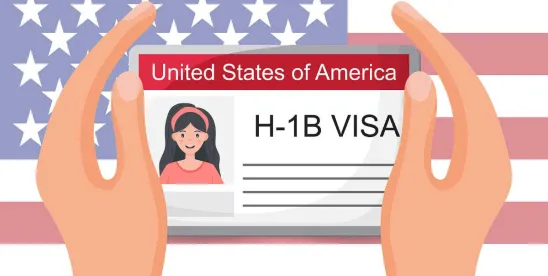For employers who need to hire foreign national talent for STEM or other hard-to-fill positions, an important immigration deadline is around the corner.
The electronic H-1B lottery application window starts on March 1 and ends on March 18 at 12 noon EST / 9 am PST. If you desire to have one or more candidates entered into the H-1B lottery, please let immigration counsel know before March 1.
If the case is selected, then immigration counsel would file a full H-1B petition with USCIS with an employment start date of October 1. This electronic lottery process allows immigration counsel to do a preliminary streamlined filing on your behalf. Employers no longer have to go “all-in” with a full petition filing up-front without knowing whether the petition has been accepted into the cap. This should result in substantial cost savings for employers.
H-1Bs are for college degreed professionals, such as software developers, engineers, scientists and financial analysts. The annual quota is 85,000 visas and demand is expected to be twice or three times that number.
Employers should check to see if they have a need for such a visa for either a possible new hire, or to keep a current foreign national employee work authorized who is on Optional Practical Training (OPT) or STEM OPT.
H-1Bs are good for three years and can be extended for an additional three years. They can be extended beyond year 6 as well if the company has sponsored the individual for permanent residency.
General H-1B Requirements
-
Must have a college degree in a field related to the job offer.
-
The position must be a specialty occupation. This is defined as an occupation that requires the theoretical and practical application of a body of highly specialized knowledge and the attainment of a bachelor’s degree or higher in the specific specialty (or equivalent) as the minimum for entry into the occupation in the United States.
-
The employer must comply with the U.S. Department of Labor (DOL) prevailing wage requirements and pay the same wages as U.S. workers receive doing the same job or the prevailing wage, whichever is higher.
-
The foreign national can only work for the sponsoring employer, but can transfer employment with a new H-1B visa petition filed by a subsequent employer.
-
The initial H-1B petition filed for the first time for an individual is subject to an annual quota of 85,000 visas, and the quota is quickly used up each year. Of the 85,000 visas, there are 20,000 visas set aside for those who have graduated with a U.S. master’s or higher
-
For an initial H-1B petition (where the foreign national has never been in H-1B status before), the employer must file via the H-1B electronic lottery in March and indicate a start date of October 1. The quota is quite small compared to demand. Perhaps less than 50% of U.S. Masters get into the quota and 30% of bachelor degreed applicants.
-
A first time H-1B is subject to strict quotas. H-1B transfers are exempt. Certain non-profit and university employers are exempt from the H-1B quota.
Prevailing Wage Requirements
The employer must pay the higher of the prevailing wage or what other U.S. workers at the company doing the same job are being paid. The U.S. Department of Labor publishes their wage survey, known as the Office of Foreign Labor Certification (OFLC) online data center wage survey at: http://flcdatacenter.com/
Other Non-Immigrant Visa Options
Besides the H-1B visa, immigration counsel can review your company and talent needs and explore other possible non-immigrant visas as well including:
-
E-1/E-2 investor/manager/essential employee
-
E-3 specialty occupation for Australians
-
F-1 student, OPT, and STEM OPT
-
H-1B1 specialty occupation for Chileans and Singaporeans
-
J-1 interns, trainees, and scholars
-
L-1A executives and managers
-
L-1B specialized knowledge workers
-
Blanket L option for large companies
-
O-1 extraordinary ability
-
P-1A extraordinary athletes and teams
-
P-1B extraordinary entertainment groups
-
R religious workers
-
TN: Trade NAFTA workers—Canada
-
TN: Trade NAFTA workers—Mexico
Employment-Based Immigrant Visa Options (Permanent Residency)
-
Employment-based first preference.
-
EB-1(A) extraordinary ability.
-
EB-1(B) outstanding researcher.
-
EB-1(C) multinational manager.
-
-
Employment-based second preference (EB-2) exceptional ability with national interest waiver.
-
EB-2 advanced degree with national interest waiver.
-
EB-2 advanced degree with certified PERM application from DOL.
-
Employment-based third preference (EB-3) with certified PERM (college degree required).
-
EB-3 skilled with certified PERM (at least two years of experience required).
-
EB-3 other (unskilled)—less than two years of experience—same priority date as EB-3.
-
Schedule A for nurses and physical therapists.
-
EB-4 (miscellaneous categories, including former U.S. Embassy and government employees abroad, Amerasians, religious workers, special immigrant juveniles, Panama Canal employees, employees of international organizations such as the United Nations, members of the armed forces, self-petitioning spouse or child of an abusive USC/LPR spouse).
-
EB-5 investor—direct job creation in own business.





 />i
/>i

